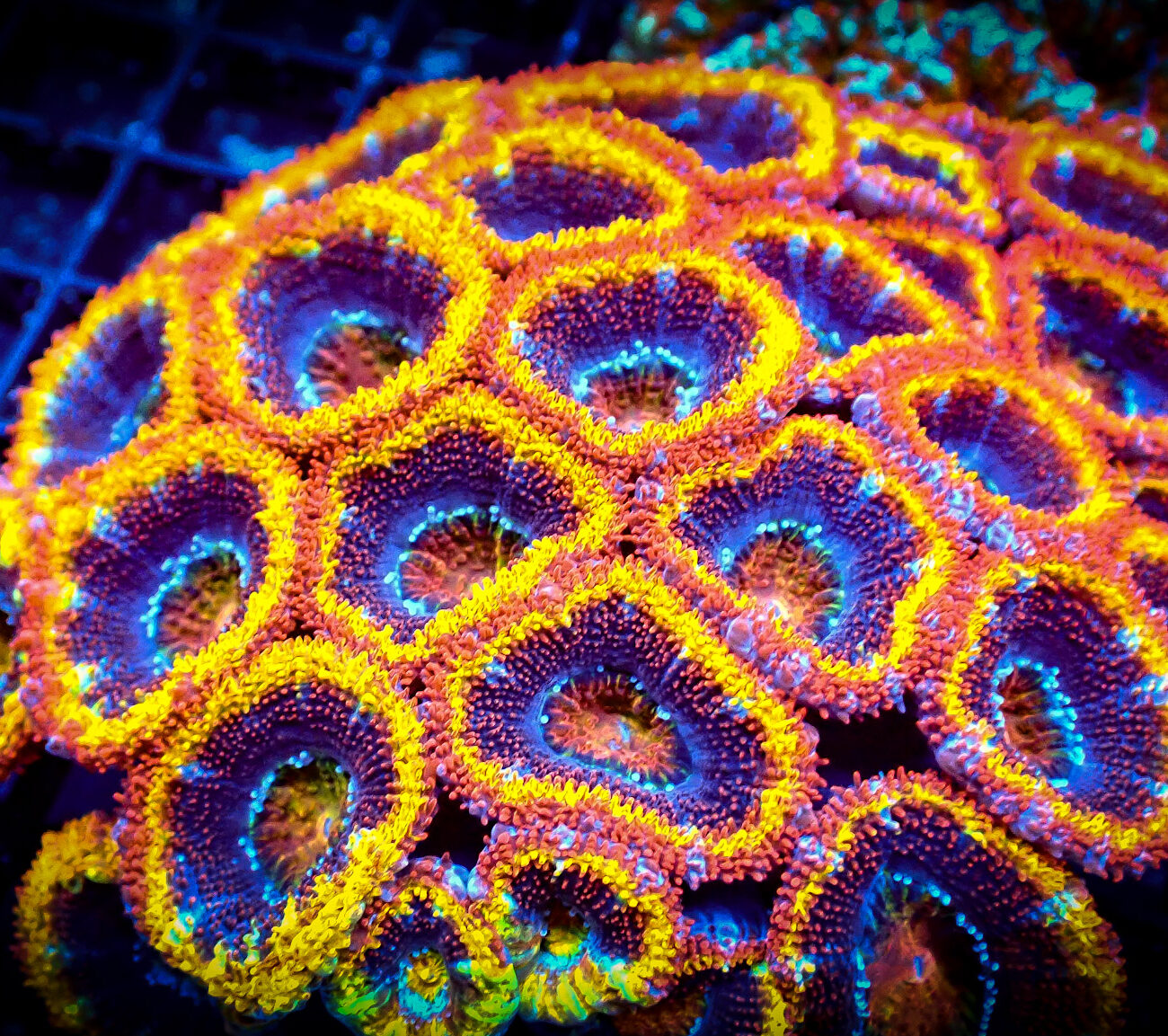Micromussa lordhowensis (Acan)

Micromussa lordhowensis, previously known as Acanthastrea lordhowensis, is a stunning large polyp stony (LPS) coral recognized for its vibrant colors and intricate patterns. Often referred to as the ‘Acan Lord’, it’s a popular choice among reef aquarium enthusiasts.
The most common formation of micro lords are contrasts of reds, purples and greens, however an astonishing display of ultra and rainbow shades of blue to pink and purple and rarer are the rainbow coloured colonies are quickly becoming the pinnacle of the aquarium trade. The corallites of this coral are large, with a diameter of up to 15 mm, contributing to their unique visual appeal. Each coral has a distinct pattern, making every piece a unique addition to the aquarium.
In terms of care, Micromussa lordhowensis thrive under low to moderate light conditions and can be damaged by lighting that’s too high. When it comes to water flow, they prefer low to medium flow.
Micromussa corals are aggressive eaters with very capable tentacles. They can easily catch and consume most types of food, including small, meaty foods like mysis shrimp and brine shrimp.
Despite their popularity, there has been some confusion in the reef keeping community about the difference between Micromussa and Acans. After a decade of classification as Acanthastrea, Micromussa lordhowensis was designated as a separate species.
Basic Water Parameters
pH
8.0 to 8.3
Salinity
34 - 36ppt
Temperature
24.0 - 26.0 Celsius
Husbandry Requirements
Lighiting
low to moderate
Flow
Low to Moderate
Aggressiveness
Acclimation Guide
- It is highly recommended to acclimate all corals to a new environment to prevent shocking corals.
- Place the corals in the water from the packing bags and slowly add the water from new environment (Dripping method is recommended).
- Use the water parameter above as a guide.
- When the vessel becomes full , replace the water with the new environment water by a small amount at a time.
- Ensure the water temperature matches with the new environment’s water.
- After the corals have spent adequate time in the acclimation water, gently place the corals to a new environment.
- It is recommended to place new corals under lower light intensity than usually required. Once corals show no signs of stress, it can be moved to higher lighting area gradually.”

